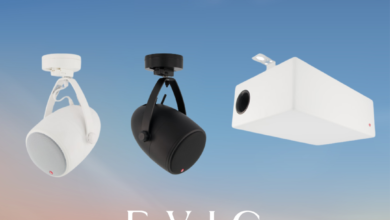Picture Perfect: Best Digital Tools for Creating Product Photos That Stand Out

In the world of online shopping, product photos are your first salesperson. A blurry, poorly lit image can cost you clicks, sales, and credibility. The good news is you don’t need a full photography studio to produce high-quality product photos. With the right digital tools, even small business owners or solo entrepreneurs can create visuals that stand out and inspire trust.
Here are seven powerful tools and strategies — plus an FAQ section at the end — to help you take your product photography to the next level.
1. Canva: Templates for Polished Product Marketing
Canva isn’t just for social media graphics — it’s also great for product photos. You can upload your shots and drop them into customizable templates for ads, catalogs, or online shops. With built-in filters, text overlays, and drag-and-drop layouts, it makes even basic images look polished.
A unique feature is Canva’s SmartMockups integration, which allows you to place your product into real-world scenes (like a coffee mug on a desk or a t-shirt on a model). This gives your photos context, helping potential buyers visualize how they’d use your product.
2. Remove.bg: Instant Background Removal
Clean, distraction-free backgrounds are critical for e-commerce listings. Remove.bg is an AI-powered tool that removes backgrounds in seconds, leaving you with a crisp product cutout. No Photoshop skills required.
The tool works especially well for batch processing, which is useful if you’re photographing multiple products. You can then add new backgrounds, use plain white for marketplaces like Amazon, or create lifestyle images by layering your product over different scenes.
3. Pixlr: Free Photo Editing for Everyday Sellers
For those on a budget, Pixlr offers a free browser-based photo editor with many of the features you’d expect in Photoshop. It allows you to crop, retouch, adjust lighting, and add filters.
One standout feature is its AI auto-enhance, which improves brightness, contrast, and sharpness in one click. It’s perfect for sellers who want their photos to pop without learning complicated editing skills. Pixlr also offers mobile apps, making it convenient to edit on the go.
See also: Trigrespinx How to Succeed in the Tech Industry
4. Fotor: Create Lifestyle Product Images
Fotor is another versatile platform, combining editing with design tools. What sets it apart for product photos is its collage and background blur tools, which are useful for showcasing multiple angles or creating lifestyle shots.
You can also use Fotor’s HDR effects to enhance product textures and colors, making them look more true-to-life. For businesses that want to create product lookbooks or Instagram-ready visuals, Fotor is a budget-friendly powerhouse.
5. Placeit: Realistic Mockups Made Easy
If you sell apparel, accessories, or digital goods, Placeit is an invaluable tool. It offers thousands of mockup templates where you can insert your product design into real-world scenarios — from hoodies and mugs to smartphone screens.
This eliminates the need for costly photo shoots with models or props. Placeit also offers video mockups, which are great for product demos or ads. For small brands that want high-quality visuals without big investments, it’s one of the best tools available.
6. GIMP: Free, Professional-Level Editing Software
For business owners who want more advanced editing features without the subscription costs, GIMP (GNU Image Manipulation Program) is an excellent choice. This open-source software is often compared to Photoshop because of its powerful editing tools, including layers, masks, filters, and color correction.
While GIMP has a bit of a learning curve, it offers unlimited flexibility for those willing to invest some time. You can fine-tune product colors, remove blemishes, and create consistent lighting effects across a batch of photos. Best of all, it’s completely free and works on Windows, macOS, and Linux.
🖼️ FAQ: Background Editing for Product Photos
Why is background editing important for product photos?
Background editing helps eliminate distractions, ensures compliance with marketplace guidelines (like Amazon requiring white backgrounds), and lets your product take center stage. It can also help you create lifestyle images by swapping in appealing settings.
What’s the best tool for quickly editing product photo backgrounds?
If you need fast, professional-looking edits, Adobe Express is a great option. Its background design tool allows you to remove, replace, or customize backgrounds without advanced editing skills. It’s especially helpful for creating product photos tailored to different marketing platforms.
Can I edit product photos on mobile devices while traveling?
Yes. Many tools like Canva, Pixlr, and Adobe Express offer mobile apps. This allows you to shoot, edit, and upload product photos directly from your phone, which is perfect for entrepreneurs who work on the go.
How do I know which type of background works best?
For marketplaces like Amazon and eBay, plain white backgrounds are standard. For your own website or social media, lifestyle or brand-colored backgrounds can make your product stand out. Always match the background style to the platform and audience.
Do background edits affect customer trust?
They can if done poorly. Overly fake or misleading edits may cause customers to feel misled. Always keep edits clean, realistic, and representative of the product. Done right, background editing enhances professionalism and builds buyer confidence.
Creating standout product photos doesn’t require a professional studio or expensive tools. From free editors like Pixlr to advanced platforms like Lightroom, today’s digital tools make it easier than ever to showcase your products in their best light. Add background editing into the mix, and you’ll have photos that not only catch the eye but also convert clicks into sales.
With the right toolkit, your product photos can tell a story, build trust, and set your brand apart in an increasingly visual marketplace.





